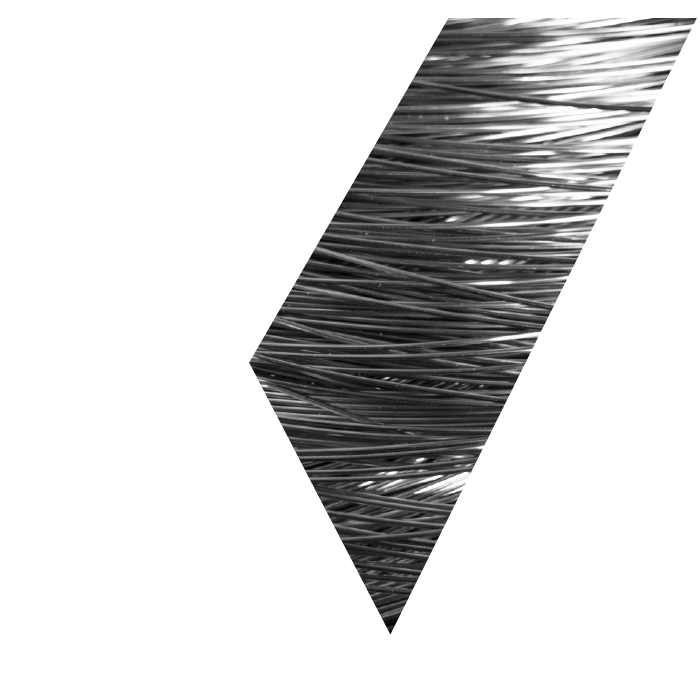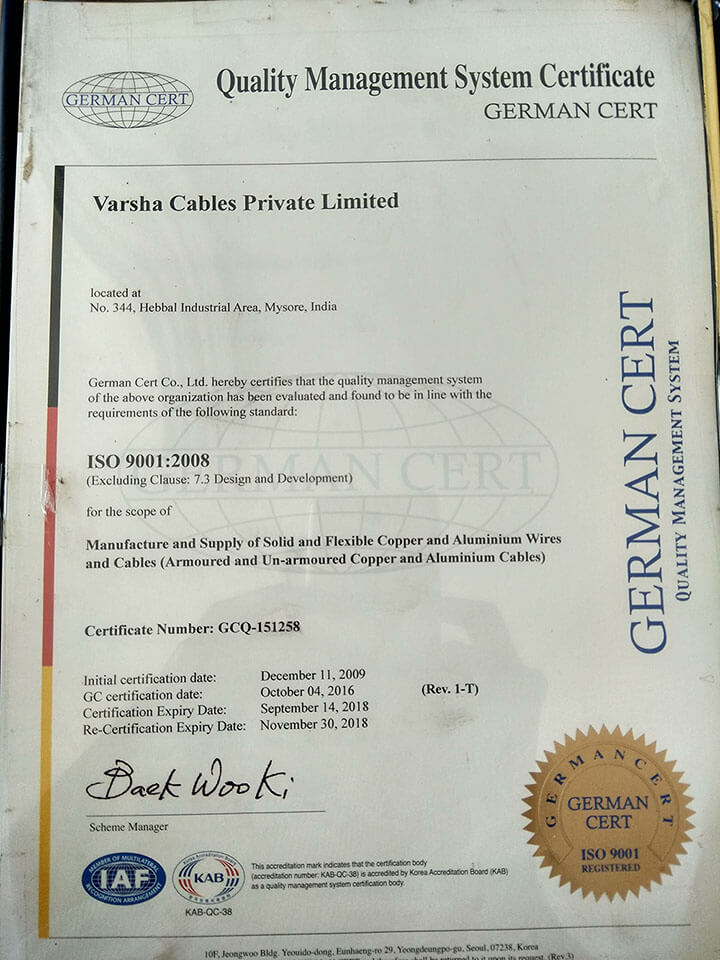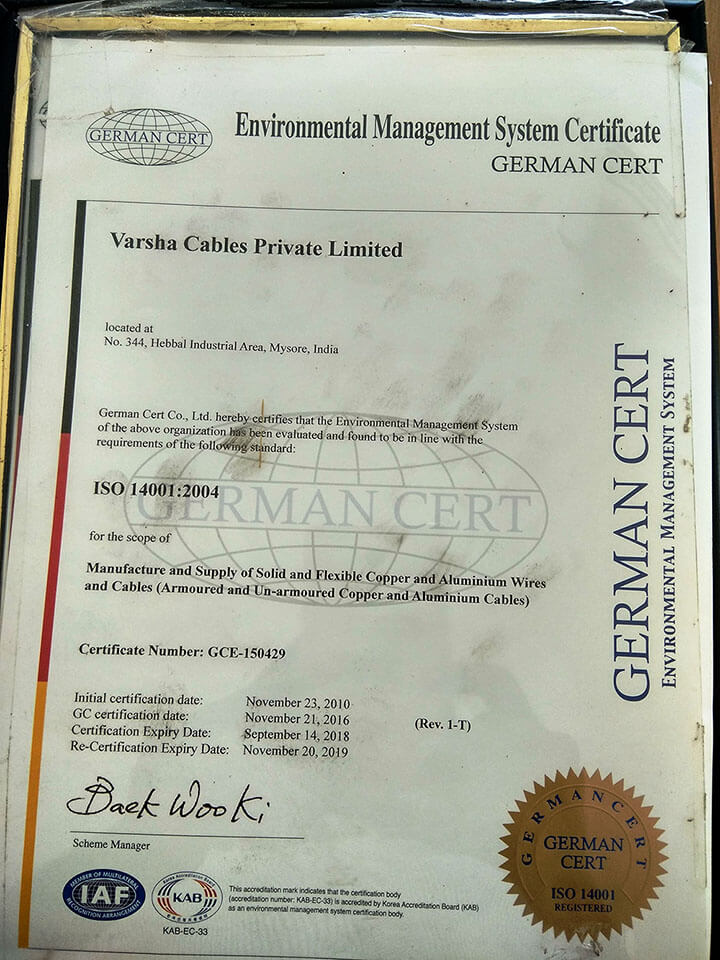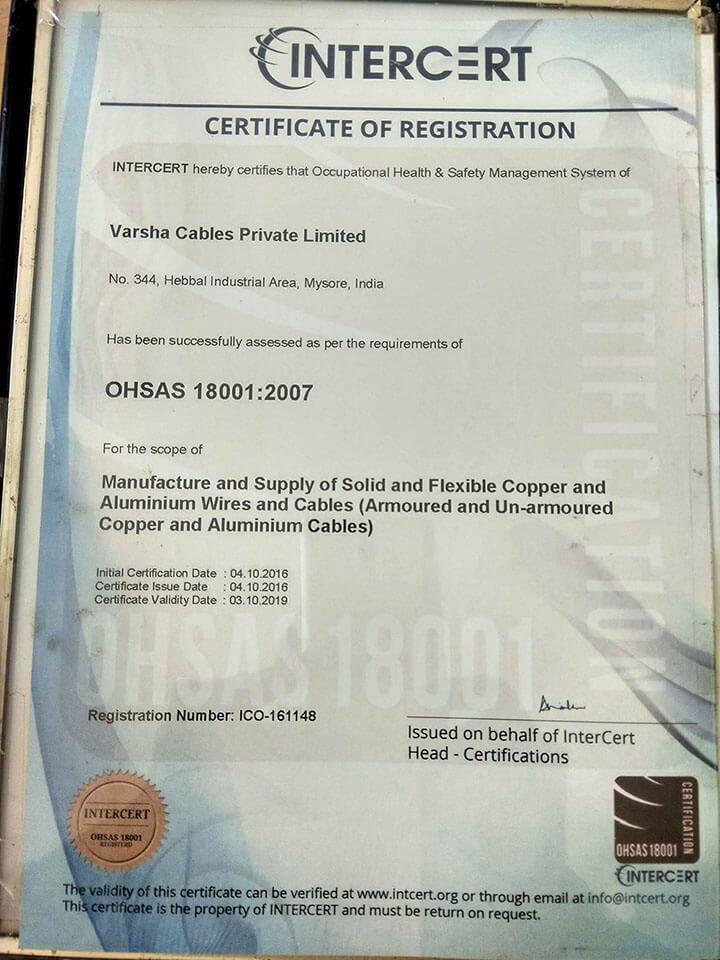
| CONDUCTORS |
| INSULATION |
| COLOUR IDENTIFICATION |
| LAYING IT ALL UP |
| INNER SHEATH |
| ARMOURING |
| OUTER SHEATH |

| Single Core | Red, Yellow, Blue, Black, Grey, White etc |
| 2-Core | Red and Black |
| 3-Core | Red, Yellow and Blue |
| 4-Core | Red, Yellow, Blue and Black |
| 5-Core | Red, Yellow, Blue, Black and Grey |
| Single Core | Red, Yellow, Blue, Black, Grey, White etc |
| 2-Core | Red and Black |
| 3-Core | Red, Yellow and Blue |
| 4-Core | Red, Yellow, Blue and Black |
| 5-Core | Red, Yellow, Blue, Black and Grey |
Click to close
 ISO 9001-2008 |
 ISO 14001-2004 |
 ISO 18001-2007 |